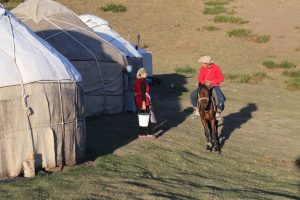 As I write this the temperature is falling dramatically, and the familiar mountain bone chilling air permeates everything. This Kyrgyzstan Yurt is spacious – there are seven of us sprawled out on various mats on the floor. The locals tell us it takes 2-3 hours for four men to setup one Yurt.
As I write this the temperature is falling dramatically, and the familiar mountain bone chilling air permeates everything. This Kyrgyzstan Yurt is spacious – there are seven of us sprawled out on various mats on the floor. The locals tell us it takes 2-3 hours for four men to setup one Yurt.
The insides are colorful with thick canvas and blankets forming the walls. A circular portion of the ceiling opens up for fresh air and sunlight during the day. This is simply done by pulling rope attached to the material at the top of the yurt. These days, modern technology has found a home in the Kyrgz Yurts in the form of flexible solar panels that hang on the outside, powering a single light bulb in the evening. As a fellow traveler remarked, “I am surprised these Yurts do not yet offer WiFi” – knowing how technology has a way of spreading itself to every corner of the globe, I wouldn’t be surprised if they were Wifi enabled Yurts in several years.
Today was a difficult six hour trek covering significant elevation gains – going from 2000 meters to 3000 meters, crossing several mountains passes, then dropping down to rivers. The land is barren and dry here – with no trees on the hillsides and a only a few small trees and bushes sprinkled around the rivers where the dry landscape is broken by the lushness of the green grass.
Our only water is from the fast moving streams where the banks are littered with horse and cow dung and who knows what else. The locals swear the water is safe and we have been following their advice by filling up our water bottles whenever we get a chance. However, this water tastes decidedly mossy.
The familiar and always dreaded light headedness of the early stages of altitude sickness crept in on several of the passes today. At one point I hit a wall and an energetic Australian came from out of nowhere and offered to carry my pack to the top of the pass.
From our short introduction to the nomadic people who live here – I surmise life is rather rough – and these are the warm months. Fortunately they dismantle the Yurts and move to small villages in the winter months. With such a barren landscape the Yurt is an oasis of comfort in an otherwise very harsh natural environment.
- Location where we spent the night
- Young child posing for photo in front f the yurt
- Early morning milking of the cow
- Inside a yurt, waiting for dinner

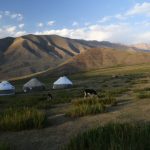
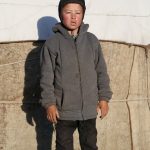
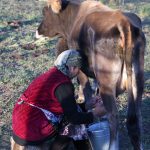
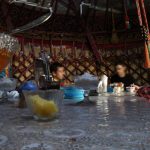
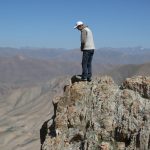
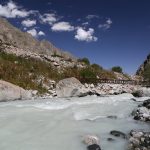
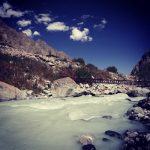
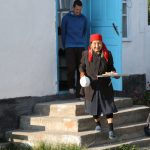
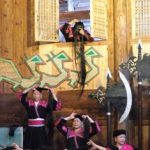

Leave a Reply